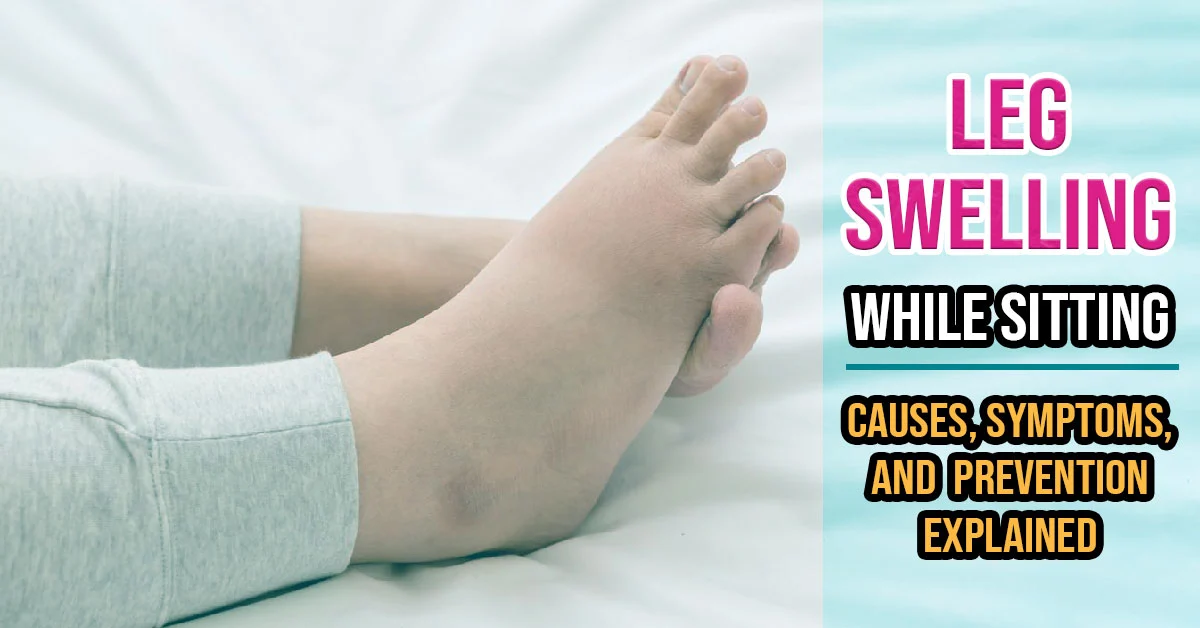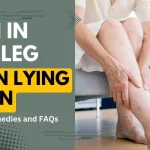Do you experience swelling in your legs after long periods of sitting or standing? This condition, known as edema, can be uncomfortable and even painful. While it is a common problem, understanding the causes can help you find effective solutions. In this article, we will explore the various reasons behind leg swelling while sitting and what you can do to manage it.
The Origins of Leg Swelling While Seated
Edema can be caused by a variety of factors, including:
- Prolonged standing or sitting
- Hot weather
- Poor circulation
- Heart, kidney or liver disease
- Certain medications
- Pregnancy
Prolonged Standing or Sitting
One of the most common causes of leg swelling while sitting is prolonged inactivity. When you sit or stand for long periods, gravity can cause fluid to collect in your lower legs and feet, leading to swelling. This can be especially problematic for people who work long hours sitting at a desk or travel frequently and spend hours on end in a seated position.
Hot Weather
Hot weather can also contribute to this. When it is hot outside, your blood vessels dilate to help regulate your body temperature. This can cause blood to pool in your legs, leading to swelling.
Poor Circulation
Poor circulation can also cause leg swelling while sitting. If the blood in your legs is not flowing properly, it can accumulate and lead to swelling. This can be caused by varicose veins, deep vein thrombosis (DVT) or other circulatory disorders.
Heart, Kidney, or Liver Disease
In some cases, leg swelling while sitting can be a symptom of underlying health conditions, such as heart, kidney or liver disease. These conditions can cause fluid to build up in your legs and lead to swelling.
Certain Medications
Some medications can also cause leg swelling while sitting. For example, certain blood pressure medications, hormone replacement therapy and nonsteroidal anti-inflammatory drugs (NSAIDs) can all contribute to edema.
Pregnancy
Pregnancy can also cause leg swelling while sitting. As the uterus expands, it can pressure the veins in your legs, causing blood to pool and swell. This is especially common in the later stages of pregnancy.
Managing Leg Swelling While Sitting
If you are experiencing it, there are several things you can do to manage it, including:
- Elevating your legs
- Wearing compression stockings
- Staying active and stretching regularly
- Drinking plenty of water
- Avoiding long periods of standing or sitting
- Taking breaks from sitting every 30 minutes
Elevating Your Legs
Elevating your legs is one of the best ways to manage leg swelling while sitting. This can help improve circulation and reduce fluid buildup. To do this, prop your legs up on a pillow or stool while sitting.
Wearing Compression Stockings
Wearing compression stockings can also help manage leg swelling while sitting. These stockings apply gentle pressure to your legs, helping to improve circulation and reduce fluid buildup.
Staying Active and Stretching Regularly
Staying active and stretching regularly can also help manage leg swelling while sitting. Moving around and stretching can help improve circulation and reduce fluid buildup in your legs. Try to take breaks from sitting every 30 minutes to stand up, stretch and move around.
Drinking Plenty of Water
Drinking plenty of water can also help manage leg swelling while sitting. Staying hydrated can help reduce fluid buildup in your legs and improve circulation. Aim to drink at least 8 glasses of water per day.
Avoiding Long Periods of Standing or Sitting
Another way to manage leg swelling while sitting is to avoid long periods of standing or sitting. Try to take breaks from sitting every 30 minutes to stand up, stretch and move around. If you have a desk job, consider using a standing desk or taking short walks throughout the day.
When to See a Doctor
If you are experiencing persistent leg swelling while sitting, it is important to see a doctor. This could be a sign of an underlying health condition that needs to be addressed. Your doctor can help you identify the cause of your swelling and provide you with appropriate treatment options.
Conclusion:
It is a common problem, but understanding the causes and learning how to manage it can help reduce discomfort and improve your quality of life. Whether it is caused by prolonged standing or sitting, hot weather, poor circulation or an underlying health condition, you can take steps to manage it.
If you are experiencing persistent swelling, seeing a doctor for proper evaluation and treatment is important.



